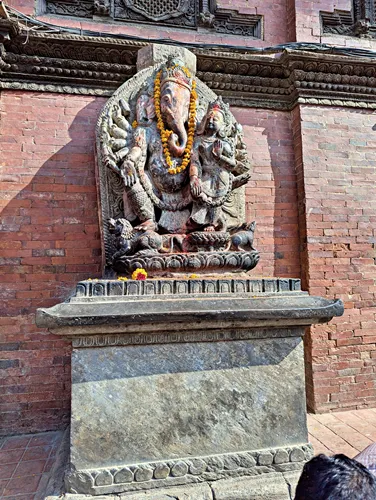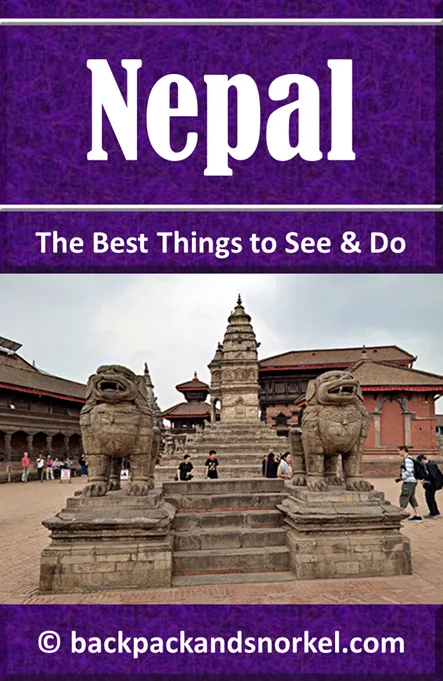The Ganesha Statue: Your Guide to Patan Durbar Square's Beloved Deity - Nepal Purple Travel Guide
(map, reviews)
This is Premium Content! To access it, please download our
Backpack and Snorkel Purple Travel GuideGanesha Statue - A Sacred Symbol of Wisdom and Protection
Dedicated to Lord Ganesha, the elephant-headed deity of wisdom, beginnings, and protection, this statue holds cultural and spiritual significance for Hindu devotees in the Kathmandu Valley.

Here at Backpack and Snorkel Travel Guides, we typically promote self-guided walking tours.
But we realize that not everybody likes to walk by themselves in a foreign city. So, just in case that you rather go with ab guide: NO PROBLEM! Please see the Viator tours below.
free GuruWalk tours
paid Viator tours
Importance of Ganesha
Ganesha, also known as Ganapati or Vinayaka, is one of the most worshipped gods in Hinduism. Believed to remove obstacles and bring good fortune, he is traditionally honored at the start of new ventures, ceremonies, and daily rituals.
The Ganesha statue in Patan Durbar Square is modest in size but frequently visited. Adorned with red vermillion powder (sindoor or abir) and offerings of flowers, rice, and incense, the statue is an active place of worship.
Ganesh, Narasimha, Hanuman and the concept of Siddhi
This statue is part of a trio of deities: Ganesh, Narasimha, and Hanuman.
Within the context of Hindu and Tantric traditions, there is a significant connection between the three deities and the concept of ‘Siddhi’, which translates to ‘perfection’, ‘accomplishment’, or ‘supernatural powers’.
Tantric practices aim to harness the powers of these deities to achieving or possessing extraordinary powers and accomplishments, both spiritual and material.
Therefore the placement of these three deities together could be seen as a location that is rich in spiritual power.
Ganesha and Siddhis:
Ganesha is widely regarded as the remover of obstacles and the god of beginnings. His association with Siddhis (supernatural powers) comes from his ability to help devotees remove physical, spiritual, and mental obstacles on the path to success, which can be seen as a form of Siddhi. Additionally, Ganesha is often associated with Siddhi and Buddhi (intellect) as his consorts, symbolizing the completion of both material and intellectual accomplishments.
Hanuman and Siddhis:
Hanuman is famously known for his immense strength, speed, and devotion, all of which are considered forms of Siddhi. His devotion to Lord Rama is often linked to his acquisition of these powers, and many of his actions in the Ramayana (such as flying across the ocean or carrying a mountain) reflect his Siddhis. The Hanuman Statue, praises his powers, emphasizing his supernatural abilities.
Narasimha and Siddhis:
Narasimha, the half-man, half-lion avatar of Vishnu, is associated with overcoming insurmountable obstacles (such as defeating the demon king Hiranyakashipu). While Narasimha is not typically depicted as a deity who directly grants Siddhis, his power and protection are symbolic of the divine strength that overcomes evil and restores order, which can be seen as a form of cosmic Siddhi in a more metaphorical sense.
Back to your self-guided tour
Author: Rudy at Backpack and Snorkel
Bio: Owner of Backpack and Snorkel Travel Guides. We create in-depth guides to help you plan unforgettable vacations around the world.
Other popular Purple Travel Guides you may be interested in:
Like this Backpack and Snorkel Purple Travel Guide? Pin these for later:





